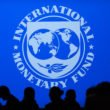ZAMBIA is a long way from attaining debt sustainability due to the huge level of indebtedness and massive restructuring required in the economy, says Bank of Zambia (BoZ) governor Dr Denny Kalyalya.
And Dr Kalyalya says Zambia’s fiscal deficit position at 8.2 per cent of Gross Domestic Product (GDP) is unsustainable and that the country should be targeting around three per cent.
Meanwhile, Dr Kalyalya has cautioned that the Coronavirus, which emerged in China, remains a threat to both the global and local economy.
Zambia’s external debt leaped to US $11.20 billion as at December 31, 2019, mainly on account of new disbursements on existing loans, mostly earmarked for infrastructure development.
The country’s new external debt position represents an increase of around US $1 billion from the previous US $10.23 billion by June 30, 2019, compared to US $10.05 billion as at December 31, 2018, and US $8.74 billion by the end of 2017.
Data also shows that Zambia’s domestic debt stock equally jumped to K80.2 billion at the end of last year from K60.3 billion at end-June 2019, compared to over K58 billion by the end of 2018, and K48.4 billion by end of 2017.
Speaking during a media briefing to announce the Monetary Policy Rate (MPR) in Lusaka, Wednesday, Dr Kalyalya said that Zambia remained a long way from attaining debt sustainability, which would ensure that the country’s fiscal fitness could eventually lead to an International Monetary Fund (IMF) economic bailout programme.
He was responding to a question on whether Zambia would ever eventually get on an IMF-backed economic bailout package in view of the ongoing debt sustainability concerns raised by the Fund in recent mission visits.
“Debt sustainability is one of the criteria for the IMF lending us support. Now, what has to be clear is that, it’s not the expectation that, tomorrow, or this year, or next year, you can get debt sustainability; I think we will be kidding ourselves, let’s be very clear on that. What is needed is to map out a path that will get you to debt sustainability in the shortest possible time. So, that’s when the negotiations go in to looking at the different facets of what that means,” Dr Kalyalya said.
“I think that the expectation that, ‘tomorrow the (Finance) Minister or the government will get the debt sustainable,’ that’s not realistic! It can’t happen because the amount of adjustment that you have to do will wipe out everything! You will have no economy, nothing. So, that’s not the point; the point is that you must work out a path that will deliver that sustainability at a foreseeable point, that’s important to bear in mind.”
He explained that Zambia’s public debt remained unsustainable on the current trajectory.
“The (Finance) Minister (Dr Bwalya Ng’andu) is on record, we have all said it, and I think if you look at the last Article IV of the last IMF Mission, at the current levels, debt is unsustainable. That’s why we are constantly saying we need to do something. Definitely, we can’t sustain this; we have to do something about it,” he said.
And Dr Kalyalya says Zambia’s fiscal deficit position at 8.2 per cent of Gross Domestic Product (GDP) is unsustainable and that the country should be targeting around three per cent.
“What is clear to the (Finance) Ministry and everybody is that, even at 8.2 per cent, that’s an unsustainable deficit. We need to be getting three per cent or thereabouts to have a sustainable fiscal position. We have to ramp up our revenue collection, tax, non-tax collection and also rationalise expenditure so that we can get to that level. So, that’s, really, the challenge we have. Where we are now is not sustainable,” Dr Kalyalya added.
Meanwhile, he cautioned that the Coronavirus, which had since claimed over 2,000 lives worldwide and disrupted global trade, remained a threat to Zambia’s economy given the impact on slashing copper prices.
“As to Zambia, we may not have the numbers, but I think it’s quite clear, we have seen in the copper price being affected, it’s reduced. So, that affects our economy directly. Even us, as an institution, we are affected; we have some things, which we were on order, we can’t get them! So, I imagine that there are many other companies that were affected, similarly. The full extent of that is not calibrated at this point, but definitely, it has a negative effect. When you travel, now, they ask you: ‘have you been to China?’ So, that is discouraging certain developments,” Dr Kalyalya said.
Earlier, Dr Kalyalya told journalists that the Monetary Policy Committee (MPC) decided to maintain the MPR at 11.5 per cent on account of subdued economic growth and persistently acute liquidity challenges.
“…Just to reiterate; the MPC held the Policy Rate at 11.5 per cent. The Committee took into account that the expected inflation in the earlier part of the forecast horizon will decline towards the upper-bound (of the 6-8 per cent range) on account of improved food supply. There’s also the possibility that once this happens, inflation will come down faster than we had projected. Another aspect we took into account: our economy is shrinking, so, we need to get robust growth going, and we must sustain that going forward,” said Dr Kalyalya.













One Response
IMF and World Bank must not be considered as commercial banks. That would a dangerous approach to managing cooperation with Breton Woods institutions. These lenders were established to come to the rescue of UN member States in need of capital and technology for the purpose of achieving economic development. To that extent, Zambia and any other developing country is free to enter negotiations for financial bailout. The negotiations need to be approached with open minds that recognize risk as integral to the market. If certain IMF or World Bank officials display arrogant or condescending mentalities, then it is right and proper for the country to express dismay and explore options available for the stalled negotiations to move forward. The suggestion that the fish cannot swim is absurd and ridiculous. Perhaps there is need to target growth magnets, such as tourism, agricultural processing, commercialization. take time to attack shopping malls. Take time to spend on the Constitution.